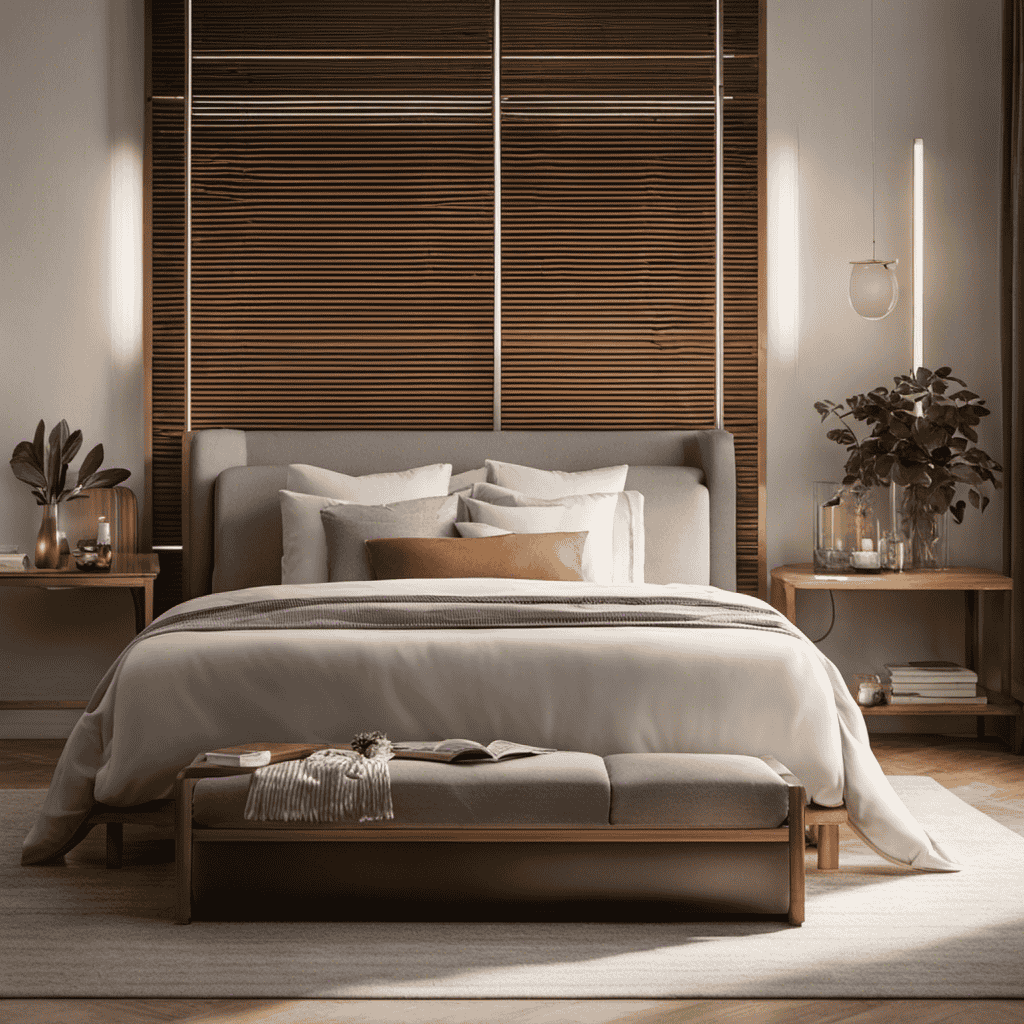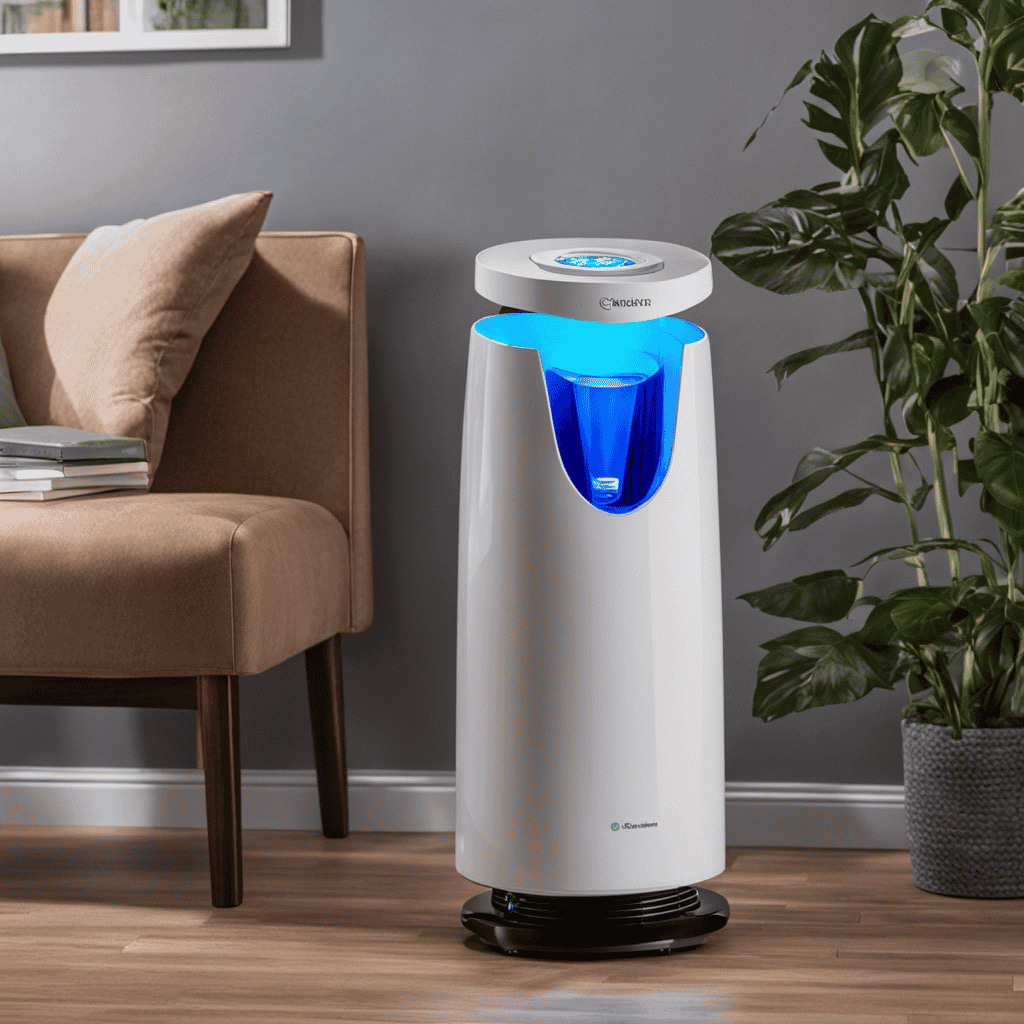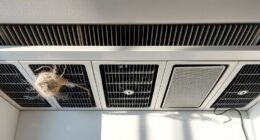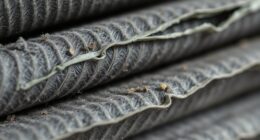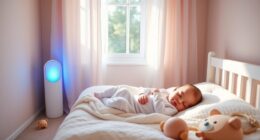I’ve constantly questioned whether my air purifier is truly effective. Therefore, I embarked on a quest to definitively determine its efficiency.
In this article, I’ll share with you a practical guide on how to determine if your air purifier is working effectively. We’ll explore the operation of air purifiers, evaluate air quality improvement, monitor particle reduction, assess odor and allergen removal, and verify proper airflow and fan function.
Get ready to gain confidence in your air purifier’s performance.
Key Takeaways
- Check if the air purifier is plugged in and turned on
- Examine the air filters for clogs or dirt buildup
- Look for indicators such as a humming sound or illuminated power light
- Regular maintenance is essential for optimal functioning
Understanding Air Purifier Operation
So, how do you know if the air purifier is actually working?
Understanding the operation of an air purifier is crucial in assessing its performance. Regular air purifier maintenance is essential to ensure optimal functioning.
To troubleshoot common issues, start by checking if the air purifier is plugged in and turned on. Additionally, examine the air filters for any clogs or dirt buildup. A clogged filter can hinder the purifier’s ability to effectively clean the air.
Look for indicators such as a humming sound or an illuminated power light to verify that the purifier is functioning correctly. If you suspect the air purifier is not working as it should, consult the user manual or contact the manufacturer for further assistance.
Evaluating Air Quality Improvement
To determine if the air quality has improved, you can rely on your senses and observe any noticeable changes in odors, dust levels, or allergy symptoms. However, to truly evaluate the health benefits and measure air pollution reduction, more objective methods are required.
Here are three key ways to assess air quality improvement:
-
Air Quality Index (AQI): This standardized measurement system provides a numerical value to indicate the level of air pollution. Lower values indicate cleaner air, while higher values signify poorer air quality.
-
Particulate Matter (PM) Monitoring: PM refers to tiny particles suspended in the air, which can be harmful to health. By monitoring PM levels, you can determine if the air purifier is effectively reducing these particles.
-
VOC Testing: Volatile Organic Compounds (VOCs) are harmful chemicals emitted from various sources. By conducting VOC testing, you can assess if the air purifier is effectively reducing these pollutants.
Monitoring Airborne Particle Reduction
To monitor the reduction of airborne particles, you can use a particulate matter (PM) monitor and observe the levels of suspended particles in the air. Measuring pollutant levels is crucial in evaluating the effectiveness of an air purifier. By comparing the particle count before and after using the purifier, you can determine its efficiency in removing contaminants from the air.
The PM monitor measures the concentration of particles of different sizes, such as PM10 and PM2.5. These measurements provide valuable insights into the air quality and the purifier’s performance. It is important to note that a lower particle count indicates better air quality and a more effective air purifier.
Regular monitoring of pollutant levels allows you to make informed decisions about the air purifier’s efficiency and whether any adjustments are necessary.
Assessing Odor and Allergen Removal
If you want to assess the removal of odors and allergens, you can use your senses to detect any changes in the air quality. A high-quality air purifier should effectively eliminate unpleasant smells and reduce the presence of airborne allergens. Here are three key factors to consider when assessing odor and allergen removal:
-
Smell Detection: Pay attention to any noticeable reduction in unpleasant odors in the room after the air purifier has been running for a while.
-
Allergen Reduction: Monitor if there is a decrease in allergy symptoms such as sneezing, coughing, or itchy eyes, indicating that the air purifier is effectively removing allergens from the air.
-
Air Quality Testing: Use an air quality monitor to quantify the levels of pollutants and allergens in the room, comparing the readings before and after using the air purifier to determine its effectiveness.
Assessing noise level and measuring energy consumption are additional aspects to consider when evaluating the performance and efficiency of an air purifier. By taking these factors into account, you can make an informed decision about the effectiveness of the air purifier in removing odors and allergens from your environment, ensuring a healthier and cleaner indoor air quality.
In order to verify proper airflow and fan function, it is important to assess the air purifier’s ability to circulate the air effectively and efficiently.
Verifying Proper Airflow and Fan Function
Assessing the airflow and fan function is crucial in determining the effectiveness and efficiency of the air purifier.
When evaluating the performance of an air purifier, it is important to ensure that there is proper airflow throughout the room. This can be done by checking if the air purifier is producing a steady and consistent flow of clean air.
Additionally, the fan function should be assessed to ensure that it is operating smoothly and quietly. Evaluating noise levels is important as excessive noise can be disruptive and indicate a problem with the fan or motor.
Lastly, it is essential to regularly check filter replacement to maintain optimal performance. Clogged filters can hinder airflow and reduce the effectiveness of the air purifier.
Frequently Asked Questions
How Often Should I Replace the Filters in My Air Purifier?
I replace the filters in my air purifier every 3-6 months. A dirty air filter can decrease the lifespan of the purifier and reduce its effectiveness in removing pollutants from the air.
Can an Air Purifier Remove Viruses and Bacteria From the Air?
Yes, an air purifier can remove viruses and bacteria from the air. It’s essential to regularly maintain your air purifier to ensure optimal performance and reap the benefits of clean, healthy air.
Are Air Purifiers Effective in Reducing Pet Dander and Pet Odors?
Air purifiers can effectively reduce pet dander and pet odors by filtering out the particles and odorous molecules in the air. This is beneficial for pet owners who want cleaner indoor air quality.
Can an Air Purifier Help With Respiratory Conditions Such as Asthma or Allergies?
As someone with respiratory issues, I wondered if an air purifier could help. Turns out, it can! Unlike a humidifier, an air purifier filters out allergens and irritants, providing relief for allergies and asthma. It’s a game-changer for me.
How Much Noise Does an Air Purifier Make While Operating?
The noise level of an air purifier depends on the model and fan speed. Regular air purifier maintenance, such as cleaning or replacing filters, can help ensure optimal performance and reduce noise.
Conclusion
In conclusion, by understanding the operation of an air purifier and evaluating air quality improvement, we can confidently determine if the air purifier is working effectively. Monitoring airborne particle reduction, assessing odor and allergen removal, and verifying proper airflow and fan function are also important steps in assessing the performance of an air purifier. These steps provide a technical and analytical approach to ensuring that the air purifier efficiently removes pollutants, allergens, and odors from the air.
By following these guidelines, we can have peace of mind knowing that our air purifier is doing its job in creating a cleaner and healthier environment.



